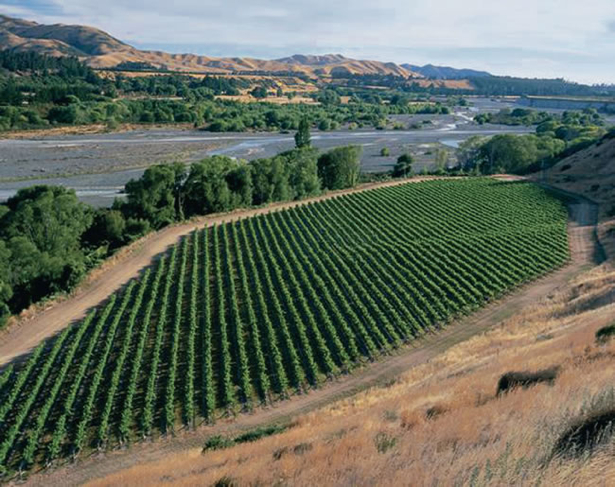New Zealand’s Villa Maria Winery
Staring out the window at the vineyards spread out across the flat land of Villa Maria Estate in Marlborough, New Zealand, I am reminded that there is a perception to most people that the Marlborough area is a homogenous area and that its Sauvignon Blanc has little variation in style or flavor.
As I discovered firsthand, this is far from the truth. There are definitive areas of distinction in both growing districts as well as styles.
vino_1
The Marlborough region is made up of two main valleys. To the north is the Wairau River Valley. This is the larger of the two, with a wide plain bookended by the Richmond Range to the north and the Wither Hills to the south. The Wairau River runs along the glacier-formed valley northeast into Cloudy Bay. The Richmond Ranges are important to the area, as it acts as a rain barrier for the valley, sheltering it from northwesterly winds and rains.
Area soils range from clay to gravel with lots of gradations in between.
The smaller Awatere Valley is just through the hills farther south and is enclosed by the Kaikoura Mountain range at the south border. The Awatere River is one of the most important geographic landmarks. Awatere translates into gray water in Maori, and during my visit I could see the silt as the river ran its course into Clifford Bay. The banks of the river have a similar color to cement just below a red-brownish layer of soil. Here the soils can be rockier and obviously silty as well. But even within the area there is a diversity of soils from one side of the river to the other. Case in point, on the north side of the river lies Taylor’s Pass Vineyard, one of the top vineyards used by Villa Maria where they grow Pinot Noir, Chardonnay and of course Sauvignon Blanc. The rows of vines are littered with stones that range in size from a couple of inches to bowling balls. But immediately across the river is another famed vineyard, Seddon Vineyard, which has virtually no stones visible at all. The soil looks much softer and sedimentary. As a result, the wines from Seddon vineyard are richer, rounder and perhaps more opulent. The wines from Taylor’s Pass are more mineral-driven and stony.
Between the two valleys, Wairau is warmer than Awatere and produces wines that are perhaps “easier” for most to understand. They tend to be more tropically fruity. This is the style most consumers associate with Marlborough Sauvignon Blanc. Wines from the Awatere Valley are more backward and mineral. They have more cool and citrus fruit character, more akin to Sancerre and Pouilly Fume, in my opinion. It is a great lesson in terroir in Marlborough to taste Villa Maria’s Reserve Wairau Valley Sauvignon Blanc next to its Taylor’s Pass. The Wairau is more textured, with hints of guava and pineapple versus Taylor’s Pass, which has a wet stone character and sugar snap peas. The Wairau is like the life of the party while the Taylor’s Pass from the Awatere is more the academic. Both are quite delicious and also prove that there is much more diversity within the Marlborough region than most care to think about.
Recommendations: 2011 Villa Maria Private Bin Sauvignon Blanc ($15) A blend of fruit from both valleys, this is exactly what people love in New Zealand Sauvignon Blanc: tropical fruit, lush flavor and a zesty, long finish. 2009 Layer Cake Primitivo ($16) This is Zinfandel by another name and for Zinfandel lovers this is another really fun option. Jammy, spicy fruit with thick texture and cherry compote.






